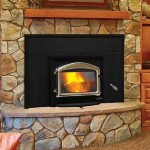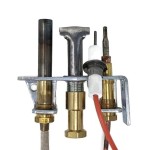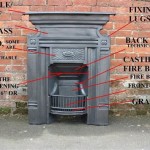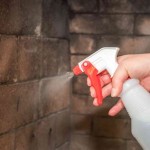Converting a Fireplace to Gas: A Comprehensive Guide
Converting a wood-burning fireplace to gas offers a blend of convenience, efficiency, and environmental considerations. The transition involves more than simply connecting a gas line; it requires careful planning, adherence to safety regulations, and a thorough understanding of the different components involved. This article aims to provide a detailed overview of the process, covering key considerations and steps for a successful conversion.
The primary motivations for converting a fireplace to gas often revolve around ease of use and reduced maintenance. Unlike wood-burning fireplaces, gas fireplaces eliminate the need to source, store, and transport firewood. They also reduce the amount of ash and soot produced, minimizing cleaning and chimney maintenance requirements. In addition, gas fireplaces offer instant ignition and controllable flame intensity, providing a consistent and predictable heat output. The reduced air pollution associated with gas combustion compared to wood burning is another significant factor influencing conversion decisions.
However, converting a fireplace to gas also presents certain challenges. Gas fireplaces typically require professional installation to ensure safe and compliant operation. This includes running a gas line to the fireplace, installing a gas burner or insert, and properly venting the exhaust gases. These tasks often necessitate permits and inspections from local authorities. Furthermore, the initial cost of conversion can be substantial, encompassing the cost of materials, labor, and any necessary upgrades to the existing fireplace structure. Therefore, it is crucial to carefully weigh the benefits against the costs before proceeding with a conversion project.
Assessing Your Existing Fireplace
The first step in converting a fireplace to gas involves a comprehensive assessment of the existing structure. This assessment aims to determine the fireplace's suitability for conversion and identify any necessary repairs or modifications. The assessment should begin with a thorough inspection of the chimney and flue. A well-functioning chimney is essential for safely venting exhaust gases produced by the gas fireplace. Cracks, leaks, or blockages in the chimney can compromise its ability to vent properly and pose a significant safety hazard. A professional chimney sweep or inspector should be consulted to evaluate the condition of the chimney and recommend any necessary repairs or upgrades. These repairs may include relining the chimney with a stainless steel liner or repairing damaged brickwork or mortar.
The firebox itself also requires careful inspection. The firebox is the area where the fire is built and should be constructed of fire-resistant materials such as firebrick or cast iron. Cracks or damage to the firebox can compromise its structural integrity and allow heat to escape. If necessary, the firebox should be repaired or relined with firebrick. The dimensions of the firebox are also important, as they will determine the size and type of gas burner or insert that can be installed. Taking accurate measurements of the firebox is essential for selecting the appropriate gas appliance.
Finally, the assessment should include an examination of the surrounding area. The fireplace should be located in a well-ventilated area, and there should be adequate clearance around the appliance. Combustible materials such as curtains or furniture should be kept a safe distance from the fireplace to prevent fire hazards. The location of the gas line and the availability of an electrical outlet are also important considerations. A gas line must be readily accessible to connect to the gas burner or insert, and an electrical outlet may be needed to power the ignition system or other features of the gas fireplace.
Selecting the Right Gas Appliance
Choosing the appropriate gas appliance is a crucial step in the conversion process. There are two main options: gas fireplace inserts and gas log sets. Each option offers distinct advantages and disadvantages, and the best choice will depend on individual preferences and the specific requirements of the fireplace.
Gas fireplace inserts are self-contained units that are designed to be installed inside an existing fireplace opening. Inserts typically feature a sealed combustion chamber, which means that they draw air from outside the home for combustion and vent exhaust gases directly through the chimney. This sealed system improves efficiency and safety by preventing drafts and minimizing the risk of carbon monoxide poisoning. Gas fireplace inserts are available in a variety of styles and sizes, allowing homeowners to customize the look of their fireplace. They also offer a range of features, such as remote control operation, thermostatic control, and adjustable flame height. However, gas fireplace inserts are typically more expensive than gas log sets, and their installation can be more complex.
Gas log sets, on the other hand, are designed to be placed directly into the firebox of an existing fireplace. They consist of a set of ceramic or refractory logs that are arranged to resemble a natural wood fire. Gas log sets are typically less expensive than gas fireplace inserts and are easier to install. They do not require a sealed combustion chamber, but they do require a properly functioning chimney to vent exhaust gases. Gas log sets are available in vented and ventless models. Vented gas log sets require the chimney damper to be open during operation, while ventless gas log sets do not. Ventless gas log sets are generally less efficient than vented models and may not be suitable for all homes due to concerns about indoor air quality.
When selecting a gas appliance, it is essential to consider the size of the firebox, the desired heat output, and the overall aesthetic appeal. It is also important to choose a unit that is certified by a recognized testing laboratory, such as the American Gas Association (AGA) or Underwriters Laboratories (UL). This certification ensures that the appliance meets safety standards and performance requirements.
Installation and Safety Considerations
The installation of a gas fireplace should be performed by a qualified and licensed professional. This ensures that the installation is done safely and in accordance with all applicable codes and regulations. The installation process typically involves several steps, including running a gas line to the fireplace, connecting the gas appliance, and venting the exhaust gases.
Running a gas line to the fireplace requires careful planning and execution. The gas line must be properly sized to provide adequate gas pressure to the appliance. It must also be installed in accordance with local codes and regulations, which may require the use of specific types of piping and fittings. A pressure test should be performed to ensure that the gas line is leak-free before connecting it to the appliance.
Connecting the gas appliance involves attaching the gas line to the burner or insert. The connections must be made securely and properly sealed to prevent gas leaks. The ignition system, which may be either a pilot light or an electronic igniter, must also be connected and tested. The venting system, whether it is a chimney or a direct vent, must be properly connected to ensure that exhaust gases are safely vented outside the home. A carbon monoxide detector should be installed near the fireplace to monitor for any potential leaks.
Safety is paramount when converting a fireplace to gas. Gas leaks and carbon monoxide poisoning are serious hazards that can result in injury or death. Regular maintenance and inspections are essential to ensure the safe operation of the gas fireplace. The appliance should be inspected annually by a qualified technician to check for leaks, corrosion, or other problems. The chimney should also be cleaned regularly to prevent blockages and ensure proper venting. Homeowners should familiarize themselves with the operating instructions for their gas fireplace and follow all safety precautions recommended by the manufacturer. Any unusual odors, noises, or malfunctions should be reported to a qualified technician immediately.
Converting A Wood Burning Fireplace Into Gas Heat Glo
Can I Convert My Wood Burning Fireplace To Gas Woodlanddirect Com

Wood To Gas Fireplace Conversion In Wisconsin Free Quote Badgerland Waesha

Convert From Wood To Gas With A Insert The Kernel Burner

Wood Fireplaces Gas Conversion That Counts

Wood Burner Conversion New Jersey Fireplaces Kjb
Can I Convert My Wood Burning Fireplace To Gas Woodlanddirect Com

Gas To Wood Fireplace Conversion Overland Park Ks Firplace Service

Should You Convert Your Cabin Fireplace From Wood To Gas

Converting Wood Fireplace To Gas Valparaiso In Northwest Chimney
Related Posts








